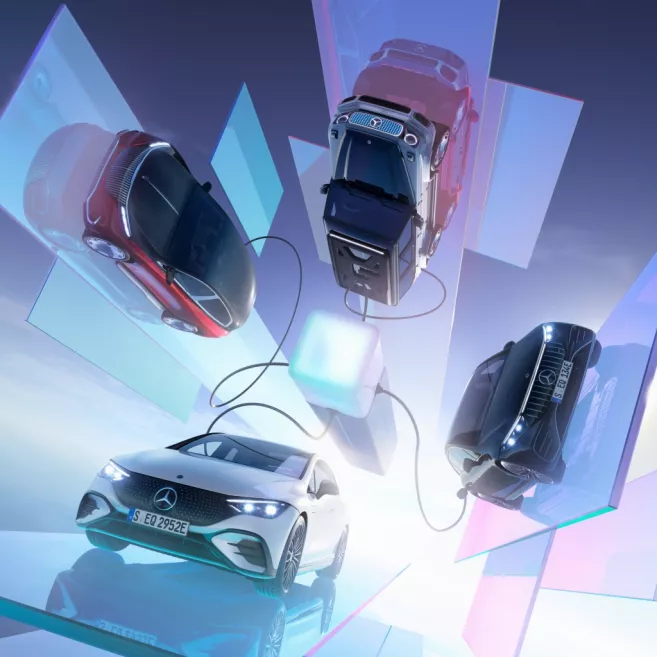Mercedes-Benz: All Electric, We Mean It!
Author: Unknown LYNX
The 2021 Munich Auto Show (IAA) has opened in grand fashion. Yesterday, we introduced to you BMW’s greenest electric car, the BMW i Vision Circular, at the show.
So today, naturally we need to talk about BMW’s perennial rival – Mercedes-Benz. As mentioned in our tweet yesterday, the core of Mercedes-Benz’s participation at the Munich Auto Show can be described as “all electric” – featuring electric vehicles from all four of its sub-brands: EQ, AMG, Maybach, and G. Once again, this move reaffirms their commitment to electrification.
Aside from the physical aspect of the new vehicles themselves, in this age of intelligence, everyone is concerned about the “soul” of the vehicles, which includes vehicle systems, intelligent driving assistance, and especially how these new electric cars released overseas will perform localization in China.
During the Munich Auto Show, Markus Schäfer, a member of the board of directors of Daimler AG and CEO of Mercedes-Benz AG, and Prof. Dr. Hans Georg Engel, Senior Vice President of Daimler Greater China Investments, were interviewed at the ultra-charging station, discussing Mercedes-Benz’s understanding of digitalization and advanced driver assistance technologies, as well as future plans, including the development of their next-generation car operating system, MB.OS.
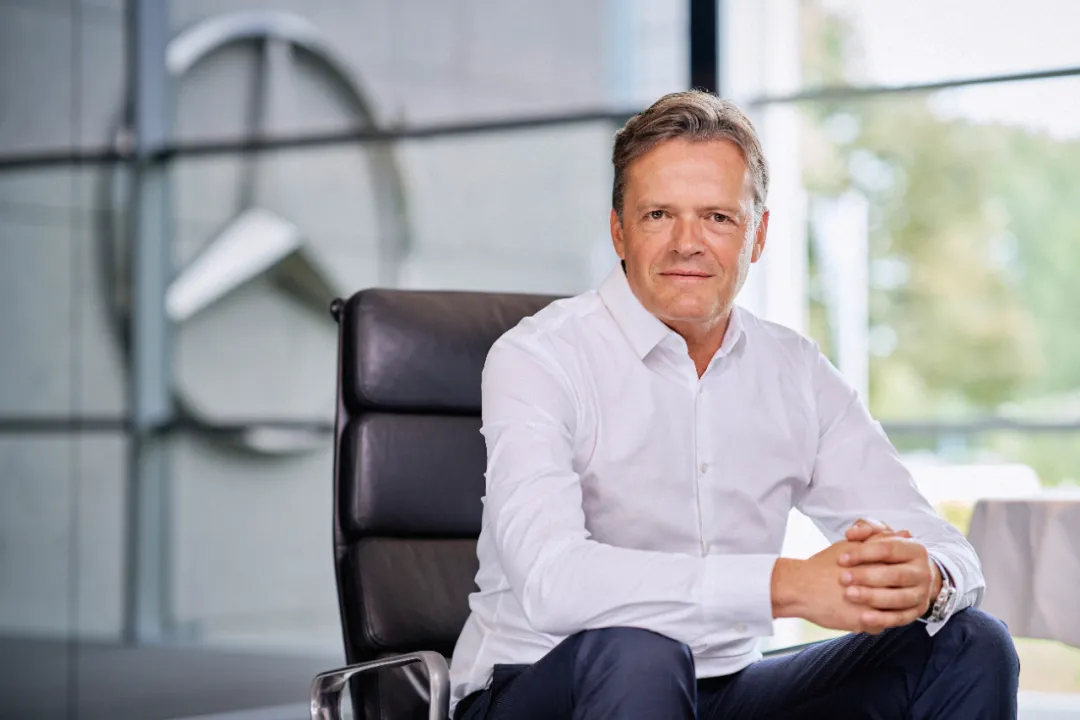
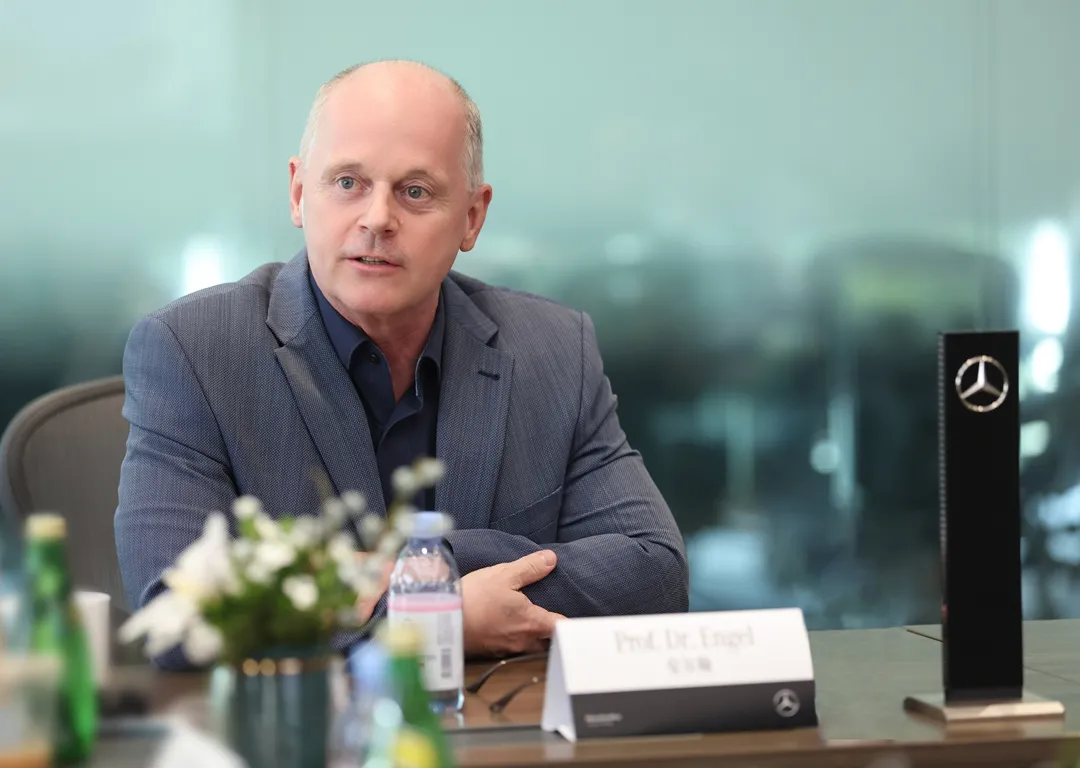
All Electric
In July of this year, Mercedes-Benz updated their electric vehicle strategy, changing their focus from “electric first” to “fully electric”:
-
By 2022, they will offer pure electric models in all sub-segments of the market;
-
By 2025, the proportion of pure electric and plug-in hybrid vehicles will reach 50%, and every model will have a pure electric version;
-
If market conditions permit, they will achieve full electrification and only sell pure electric vehicles by 2030.
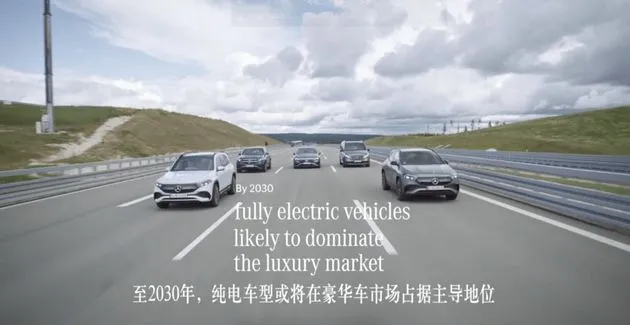 After just two short months, Mercedes has brought to the Munich Auto Show the preliminary results of its strategic plan – four electric vehicles covering all four sub-brands.
After just two short months, Mercedes has brought to the Munich Auto Show the preliminary results of its strategic plan – four electric vehicles covering all four sub-brands.
Among these, the closest to consumers is obviously the global debut of EQE, which is the second electric vehicle developed by Mercedes on the new pure electric EVA platform after EQS, and can be directly called the “smaller EQS“.
In terms of exterior and interior design, EQE is almost identical to EQS. EQS’s unique features, such as the “Star Matrix” closed grille, “One-Bow” curved body, and Hyperscreen ultra-connected screen, are fully inherited by EQE.
The only difference is in size. However, with a length of 4,946 mm and a wheelbase of 3,120 mm, the EQE has become the second longest car in the Mercedes sedan product line, second only to the EQS and the long-wheelbase/Maybach S-Class.
In terms of range, which is of concern to most consumers, the EQE is expected to be equipped with a 90 kWh three-element lithium battery pack, which can cruise for 660 km under the European WLTP standard and 700 m under the Chinese CLTC standard.
Most importantly, unlike the EQS, which has just been delivered in Europe and is likely to be priced up like the Mercedes S-Class after its introduction to China, the EQE is much closer to Chinese consumers.
Although Mercedes officials have only stated in vague terms that the EQE will be launched in the market next year and will be introduced and produced in China in the future, in fact, the spy photos of EQE’s road test in China have already been widely spread on the Internet.
In addition to the EQE, which is closest to mass production and the market, the three other electric vehicles Mercedes brought to the Munich Auto Show are like the brand’s sub-brands transitioning to electrification.We witnessed the EQS 53 4MATIC+ powered by front and rear dual motors with a total output of up to 560 kW/761 hp and a torque exceeding 1000 N·m for quick acceleration, which can reach 0-100 km/h in just 3.8 seconds/3.4 seconds (with the optional performance package) under more than 80% battery capacity. It is equipped with a 108-kWh battery pack optimized for high-performance output, continuing the legacy of AMG’s “performance beasts” in the electric era.
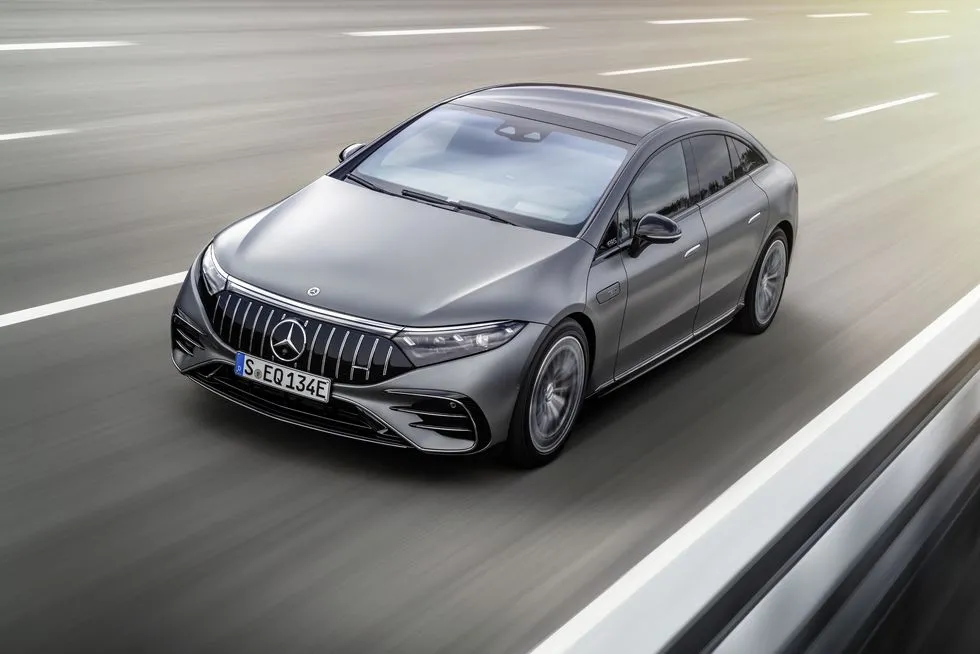
We also saw the EQS SUV with the prefix “Maybach”. The two-tone paint, disc-shaped wheels, C-pillar Maybach logo, and other elements make it clear that this is an expensive Maybach at a glance. The seemingly old-fashioned luxury style is reinvented with electrification.

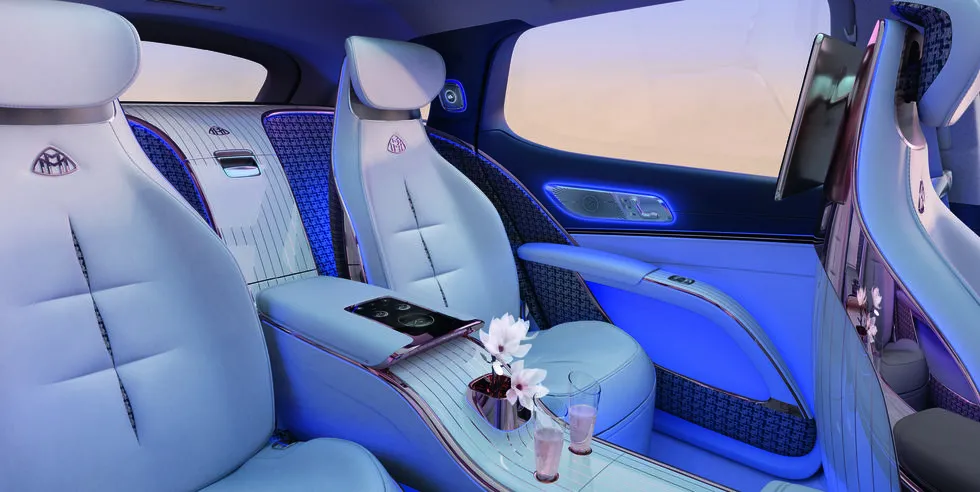
Moreover, we witnessed the “Big G” logo glowing. Under the square-shaped exterior, the EQG is expected to be equipped with four independent motors, which might change people’s stereotype that “electric vehicles can’t be off-road vehicles” in the future.
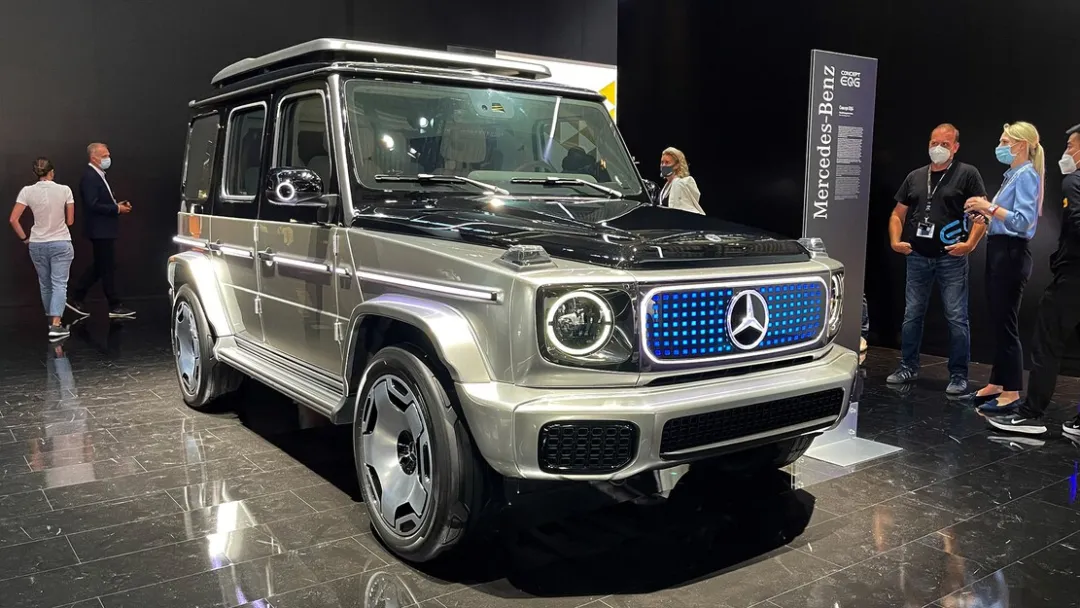
However, these three models are still mostly in the conceptual stage, and Mercedes-Benz has placed their release “schedule” after the distant year of 2023. The fundamental purpose of Mercedes-Benz’s presentation of these models at the Munich Motor Show is to tell everyone:
“I’m serious about being completely electrified!”
In addition to the electrified “body”, the “soul” also needs to be intelligent
In addition to the “hard” conditions such as the vehicle’s own performance and endurance, when it comes to intelligent electric vehicles, we now also consider the “software,” such as the onboard system and intelligent driver assistance system.
In 2018, Mercedes-Benz released the MBUX intelligent human-machine interaction system. As an entertainment system, MBUX brings users a powerful and advanced smart connectivity experience.The MBUX intelligent human-machine interaction system has now developed to the second generation and is equipped in the new Mercedes-Benz S-Class sedan, EQS electric sedan, and the new Mercedes-Benz C-Class cars, with further upgraded features. The owners can access functions such as rear-wheel steering through the software. Meanwhile, Mercedes-Benz is also providing more services and software upgrade packages in succession.
In addition, Mercedes-Benz has realized that the digital concept should be integrated into the vehicle development. Just being good at an in-car entertainment system is far from enough.
Therefore, Mercedes-Benz is creating the next-generation MB.OS operating system. The system will connect all the in-car systems with cloud computing and the Internet of Things, and be combined with the electric drive architecture and software architecture to become a complete ecosystem.
According to the plan, from 2022 to 2023, Mercedes-Benz will install the lightweight version of the MB.OS operating system on the new E-Class models of the next generation. Until 2024, they will continue to upgrade the MBUX intelligent human-machine interaction systems through software packages. In 2024, they will launch the complete version of the MB.OS operating system.
The MB.OS launched in 2024 will have a brand new underlying architecture. Both the underlying and middleware will be independently developed by Mercedes-Benz, and can cover the four most important areas of the automobile: information entertainment system, intelligent auxiliary driving system, body control system, and vehicle driving control system.
This can not only enable the direct upgrading of software and services but also greatly reduce the number of in-vehicle components for Mercedes-Benz, promote the standardization of components including chipsets, save costs and improve efficiency.
In addition to developing a brand-new intelligent in-car system, another important focus of Mercedes-Benz’s software development is still on the intelligent auxiliary driving system.
Currently, Mercedes-Benz is gradually launching intelligent auxiliary driving technology in China. For example, the new Mercedes-Benz S-Class sedan is equipped with an L2-level intelligent auxiliary driving system and has received good market feedback. A more advanced L3-level intelligent auxiliary driving system will be installed in the S-Class and EQS electric sedan in the future.When it comes to more advanced intelligent driving assistance systems, the concerns expressed by Mercedes-Benz executives seem to revolve not so much around technological difficulty, but rather around compliance considerations:
In Germany, Mercedes-Benz will become the first carmaker to receive certification from regulatory authorities for Level 3 intelligent driving assistance. This means that, after the EU and Germany officially accept the Level 3 system, the advanced intelligent driving assistance system equipped on the new Mercedes-Benz S-Class sedan and EQS electric sedan will be made available to consumers.
In China, Mercedes-Benz will follow the same logic, submitting an application for certification to relevant regulatory authorities once the Level 3 intelligent driving assistance system meets certain technical requirements.
Currently, Shenzhen has become a pilot city for Level 3 certification, which may mean that Mercedes-Benz owners in the city will have the opportunity to be the first to experience Mercedes-Benz’s latest innovation in intelligent driving assistance.
Final Thoughts
To achieve its ambitious electrification goals, Mercedes-Benz has announced investments of over 40 billion euros in pure electric vehicles between 2022 and 2030. Conversely, by 2026, investment in internal combustion and hybrid technology by Mercedes-Benz will decrease by 80%.
Between these gains and losses lies yet another traditional automotive giant’s grand commitment to go “all in EV.” However, for ordinary consumers, the concern is perhaps still about how much the pure electric EQE will ultimately cost and whether its experience will surpass that of the E-Class.
Fortunately, the answer to this question should not be too far away from us.
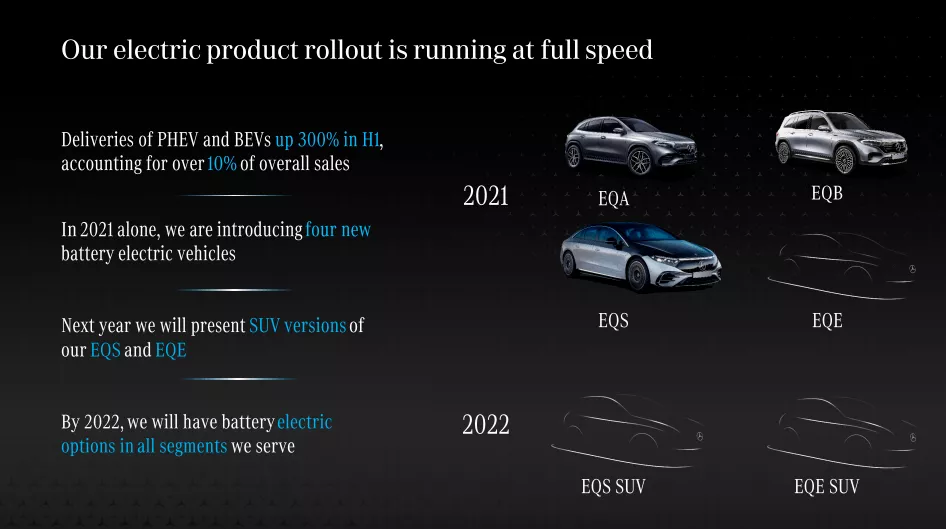
This article is a translation by ChatGPT of a Chinese report from 42HOW. If you have any questions about it, please email bd@42how.com.
